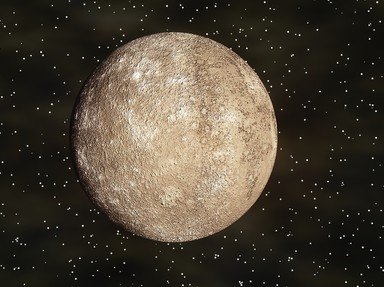Quiz Answer Key and Fun Facts
1. Saturn is the sixth planet closest to the Sun, while Earth is the third. What then is Mercury's proximity to the Sun?
2. As with most of the planets in the Solar System (apart from Earth and Uranus), Mercury is named after a Roman god. Which of the planet's attributes match that of the god it was named after?
3. Do we know when the planet Mercury was first discovered, and by whom?
4. While Saturn has over sixty moons, planet Earth has only one. How many moons does the planet Mercury have?
5. Due to the planet's lack of atmosphere, what colour is Mercury's sky?
6. Of each of the eight planets, Mercury has the greatest surface-temperature swing, and has been known to fluctuate from an incredible 450 Celsius to a jaw-dropping minus 170 Celsius.
7. What did robotic space probe, Mariner 10, reveal about Mercury, following its launch in November, 1973?
8. In 2008, a NASA spacecraft made its first flyby of Mercury, becoming only the second spacecraft to ever have completed a flyby of the planet. What was its name?
9. The Hubble Space Telescope has never been used to view the planet Mercury. Why not?
10. Mercury is known for its bizarre orbiting pattern, which is considered the most erratic of all the planets. However in the early twentieth-century, it was Mercury's eccentric orbit pattern that helped to prove one well-known German physicist's theory. Who was this man?
Source: Author
poshprice
This quiz was reviewed by FunTrivia editor
CellarDoor before going online.
Any errors found in FunTrivia content are routinely corrected through our feedback system.

